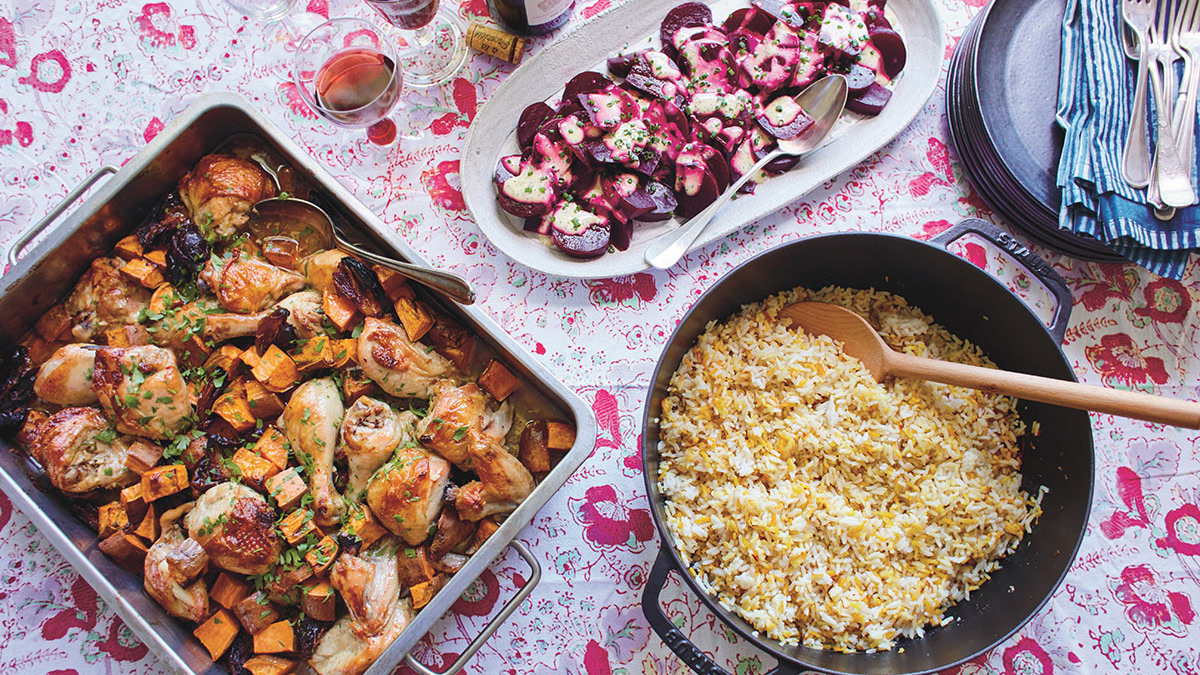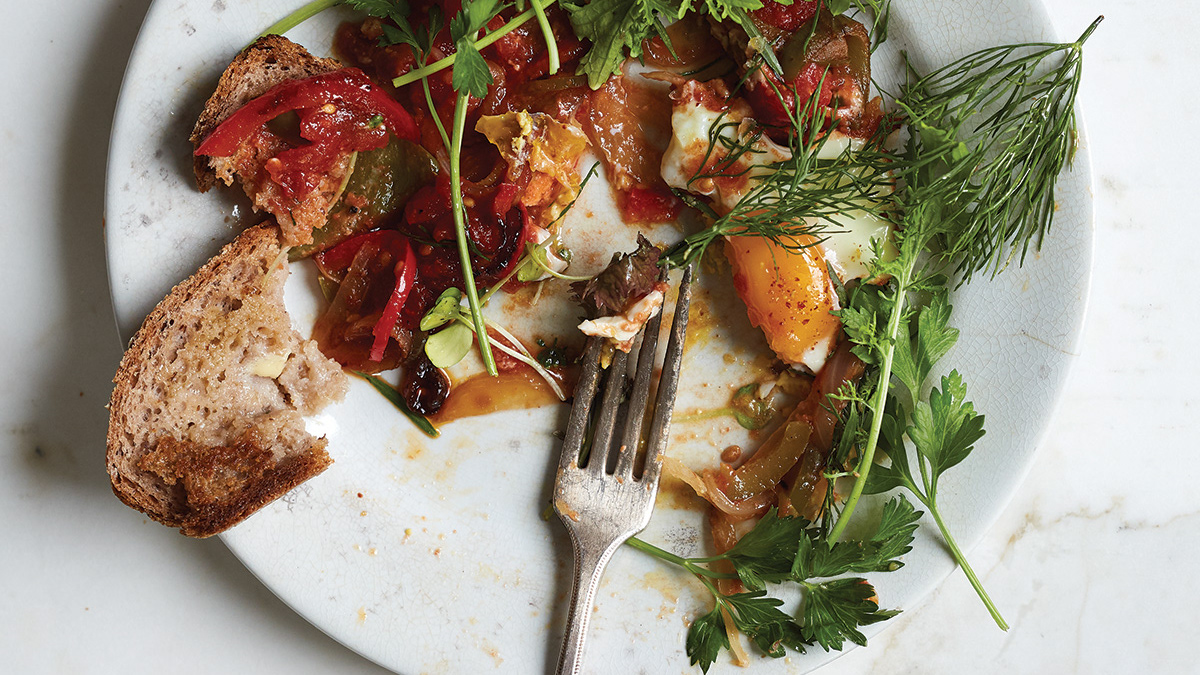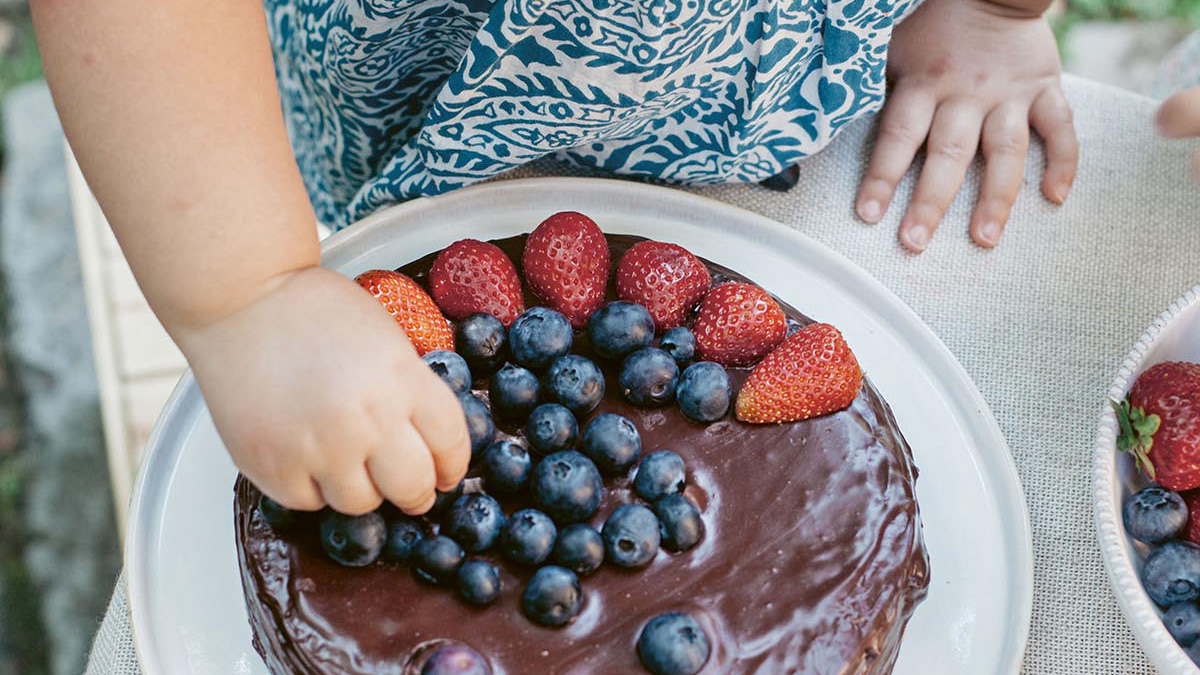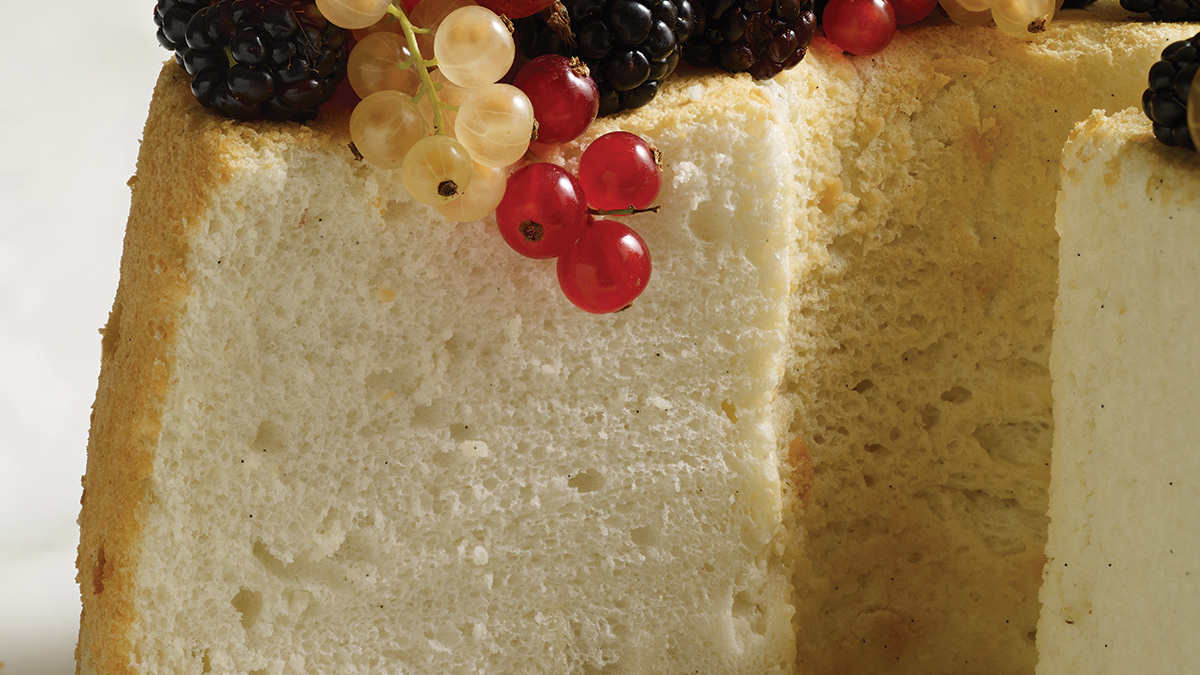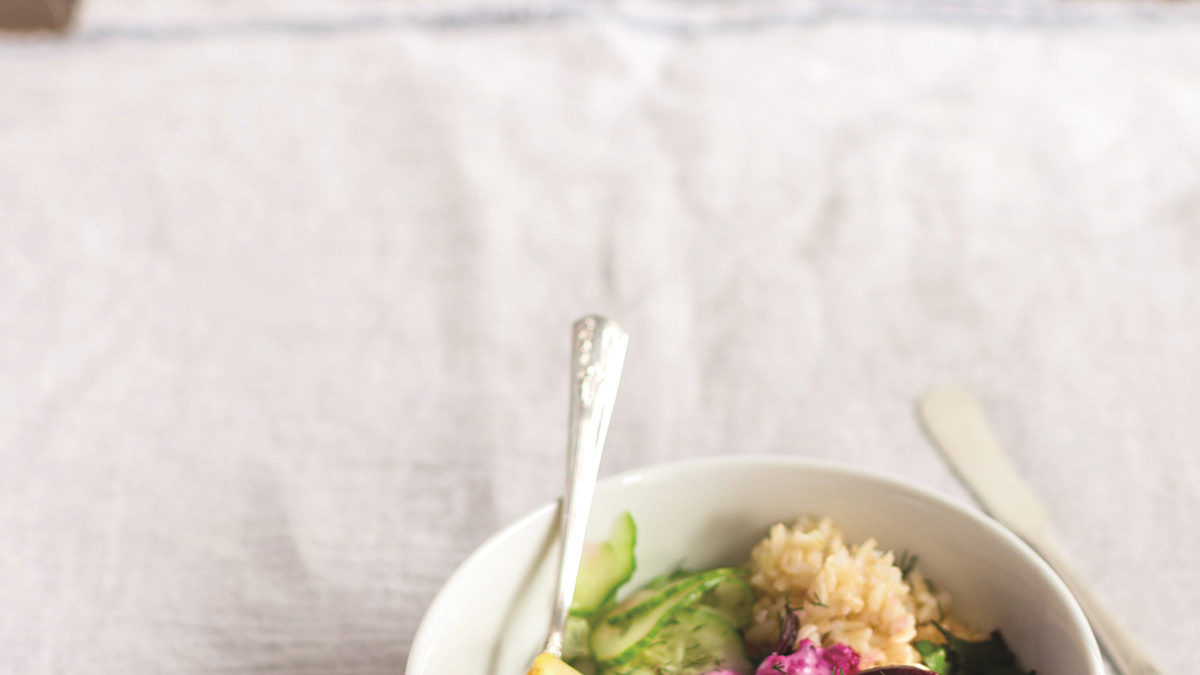PHOTO: Clare Barboza/Ten Speed Press; Whole-Grain Buttermilk Pancakes from Whole-Grain Mornings by Megan Gordon call for a mix of buckwheat and spelt flours.
Laura Brehaut/Postmedia News
Originally published on February 26, 2014; canada.com
Originally published on February 26, 2014; canada.com
Author Megan Gordon isn’t afraid of using a little butter, bacon or cheese with her whole grains. That’s part of the charm of her new cookbook Whole-Grain Mornings (Ten Speed Press, 2013). Quick cooking whole grains such as amaranth, buckwheat and millet, and slow cooking grains like barley, farro and steel-cut oats are undeniably the stars of the recipes, which reflect the breakfasts Gordon and her partner Sam Schick enjoy eating.
“You can really get excited about whole grains and make nutritious food that’s also really delicious,” Gordon says in a phone interview from Seattle. “It can be a little indulgent every now and then; the two don’t have to be mutually exclusive.” The recipes span the seasons, and are organized first by seasonality and then by the time and effort required – Busy Weekdays, Slow Sundays and Brunch – with Spreads and Toppings closing each of the four sections. There’s also a chapter covering breakfast basics, such as Homemade Yogurt (both with and without a yogurt maker), Infused Honeys and Two Easy Nut Milks: Almond and Hazelnut.
Whole-Grain Mornings is also the story of Gordon’s long-distance relationship with Schick – one that starts in the San Francisco Bay Area and ends in Seattle where they now share a home together. The pair met while collaborating on the website for Marge Granola – Gordon’s small-batch granola company. Gordon has been making granola since 2010 and shares her tips for making a stellar batch in the book, as well as recipes for Apricot Pistachio Granola (recipe below), Hazelnut Cacao Nib Granola, and a Make-Your-Own Signature Granola. Olive oil is the fat of choice in the Marge kitchen; as Gordon points out, “If you’re not using oil (or another fat), you’re going to have a pile of dry oats.” The olive oil imparts a toasted quality and salt enhances the flavour; this granola isn’t overly sweet and is loaded with nuts and seeds.
Gordon features whole grains in a host of savoury recipes as well, including a California Barley Bowl with Lemony Yogurt Sauce, Smoked Salmon Crème Fraîche Tart with a Cornmeal Millet Crust, and her version of shakshuka – Saucy Tomato Poached Eggs with Kale and Wheat Berries (recipe below). Millet is among her favourite whole grains, although she admits it can be a hard sell because it’s not as common as other whole grains, and is used in bird seed. “It has a little bit of a negative rap there,” she says with a laugh. “But it’s a gluten-free grain; it’s tiny and yellow and has a really mild, corn flavour. And you can cook it as a pilaf like you would quinoa or you can toss it into your baked goods raw. It just adds this wonderful crunch; it’s great in granola or muffins or scones, and it’s just an easy way to work in whole-grain nutrition and pleasant, lovely crunchiness.”
Whole-Grain Pancakes call for a mix of buckwheat and spelt flours, Pear-Hazelnut Oat Muffins for whole wheat pastry flour, and Whole-Grain Gingerbread a mix of spelt flour and whole wheat flour. Spelt flour is Gordon’s recommended ‘starter flour’ for those new to cooking with whole-grain flours. “It acts much like all-purpose flour in the sense that your muffins will rise, your bread will rise; everything will work. But it’s a lot lighter than whole wheat flour, it has a really mild flavour, and it’s soft in texture so you can actually do a 100 per cent swap for spelt flour in most American-style baking recipes. So any muffins, scones or quick breads, that kind of thing,” Gordon says.
To start experimenting with other whole-grain flours, such as barley, buckwheat and oat, Gordon suggests swapping a quarter to half of the all-purpose flour called for in a recipe with whole-grain flour. The gluten and protein content of the flours can lead to varied results, so she doesn’t recommend a one-to-one swap right off the bat. Beyond the nutritional benefits of eating more whole grains are the unique flavours they impart. “Barley flour is really a wonderful, mild, sweet flour that pairs really well with fruit so if I’m ever doing muffins or scones that have berries or that sort of thing, barley is great,” Gordon says. “And I’ve been really into rye flour lately. It’s nice this time of year, in the winter, because it has a dark, earthy flavour and it’s really great with chocolate.”
Recipes excerpted from Whole-Grain Mornings Copyright (c) 2013 by Megan Gordon. Published by Ten Speed Press, a division of Random House, LLC, a Penguin Random House Company.
APRICOT PISTACHIO GRANOLA
3 cups (300 g) rolled oats
1 cup (130 g) raw pistachios, coarsely chopped
1 cup (130 g) raw pepitas (pumpkin seeds)
1⁄2 cup (60 g) raw sesame seeds
1⁄2 cup (60 g) raw sunflower seeds
1 tsp kosher salt
1⁄4 tsp ground cinnamon
1⁄2 tsp ground cardamom
1⁄2 tsp pure vanilla extract
1⁄2 cup (120 ml) extra-virgin olive oil
1⁄2 cup (120 ml) maple syrup
1⁄2 cup (75 g) finely chopped dried apricots (about 10 dried apricots)
1⁄4 cup (25 g) diced crystallized ginger
1 cup (130 g) raw pistachios, coarsely chopped
1 cup (130 g) raw pepitas (pumpkin seeds)
1⁄2 cup (60 g) raw sesame seeds
1⁄2 cup (60 g) raw sunflower seeds
1 tsp kosher salt
1⁄4 tsp ground cinnamon
1⁄2 tsp ground cardamom
1⁄2 tsp pure vanilla extract
1⁄2 cup (120 ml) extra-virgin olive oil
1⁄2 cup (120 ml) maple syrup
1⁄2 cup (75 g) finely chopped dried apricots (about 10 dried apricots)
1⁄4 cup (25 g) diced crystallized ginger
1. Preheat the oven to 325°F. Line a large rimmed baking sheet with parchment paper or a silicone mat.
2. In a large bowl, stir together the oats, pistachios, pepitas, sesame seeds, sunflower seeds, salt, cinnamon, and cardamom.
3. Add the vanilla, olive oil, and maple syrup and stir to combine. I use my hands at this point so that all of the wet and dry ingredients are evenly mixed together. Turn the mixture out onto the prepared baking sheet and spread in an even layer.
4. Bake until fragrant and golden brown, 35 to 40 minutes. Stir every 15 to 20 minutes to ensure the granola bakes evenly. Remove from the oven and let cool completely on the baking sheet. If the granola doesn’t seem as toasty and crunchy as you’d like, it will firm up considerably as it cools. Stir in the apricots and crystallized ginger once the granola has cooled. Store in an airtight container for 3 to 4 weeks or refrigerate for up to 6 weeks (if refrigerating, keep the apricots in a separate sealed bag and add them as you enjoy your granola so they don’t become hard and dry.
makes about 8 cups
2. In a large bowl, stir together the oats, pistachios, pepitas, sesame seeds, sunflower seeds, salt, cinnamon, and cardamom.
3. Add the vanilla, olive oil, and maple syrup and stir to combine. I use my hands at this point so that all of the wet and dry ingredients are evenly mixed together. Turn the mixture out onto the prepared baking sheet and spread in an even layer.
4. Bake until fragrant and golden brown, 35 to 40 minutes. Stir every 15 to 20 minutes to ensure the granola bakes evenly. Remove from the oven and let cool completely on the baking sheet. If the granola doesn’t seem as toasty and crunchy as you’d like, it will firm up considerably as it cools. Stir in the apricots and crystallized ginger once the granola has cooled. Store in an airtight container for 3 to 4 weeks or refrigerate for up to 6 weeks (if refrigerating, keep the apricots in a separate sealed bag and add them as you enjoy your granola so they don’t become hard and dry.
makes about 8 cups
SAUCY TOMATO POACHED EGGS WITH KALE AND WHEAT BERRIES
3 tbsp extra-virgin olive oil, plus more for serving
1⁄2 cup / 60 g diced yellow onion (about 1 ⁄2 medium onion)
2 Anaheim chiles, stemmed, seeded, and diced
3 cloves garlic, minced
1 (28-oz / 800 g) can crushed tomatoes
1 tbsp tomato paste
3⁄4 cup (85 g) cooked wheat berries
3 tbsp capers, drained
1⁄2 tsp ground cumin
1 tsp sweet paprika
1 tbsp grated lemon zest
1 tsp kosher salt
1⁄2 bunch kale, stemmed and coarsely chopped (about 2 1⁄2 cups / 125 g)
6 large eggs
1⁄4 cup (45 g) crumbled feta cheese
flaky salt
red pepper flakes
1⁄2 cup / 60 g diced yellow onion (about 1 ⁄2 medium onion)
2 Anaheim chiles, stemmed, seeded, and diced
3 cloves garlic, minced
1 (28-oz / 800 g) can crushed tomatoes
1 tbsp tomato paste
3⁄4 cup (85 g) cooked wheat berries
3 tbsp capers, drained
1⁄2 tsp ground cumin
1 tsp sweet paprika
1 tbsp grated lemon zest
1 tsp kosher salt
1⁄2 bunch kale, stemmed and coarsely chopped (about 2 1⁄2 cups / 125 g)
6 large eggs
1⁄4 cup (45 g) crumbled feta cheese
flaky salt
red pepper flakes
1. In a 12-inch skillet over medium heat, warm the oil until it shimmers. Add the onion and sauté until just soft, 3 to 4 minutes. Add the chiles and sauté for another 3 to 4 minutes. Then add the garlic and continue sautéing for 1 minute.
2. Add the crushed tomatoes, tomato paste, cooked wheat berries, capers, cumin, paprika, lemon zest, and kosher salt and stir well to combine. Simmer, uncovered, over low heat until the sauce starts to thicken, about 15 minutes. Taste and season with more salt as desired.
3. Fold in the kale and simmer until it begins to soften into the sauce, 1 to 2 minutes. Use a wooden spoon to make 6 little wells in the sauce for the eggs to nestle into. The skillet will be relatively full at this point, so just do your best. Crack the eggs into the wells and cover the skillet. Cook over low heat until the whites are firm but the yolks remain a touch runny, 6 to 8 minutes. Top with the crumbled feta.
4. Scoop into bowls, sprinkle with flaky salt and red pepper flakes, and drizzle with a dash of olive oil. While I find this best the day it’s made, you can allow leftovers to cool completely, then cover with plastic wrap, and refrigerate for up to 2 days.
serves 4 to 6
2. Add the crushed tomatoes, tomato paste, cooked wheat berries, capers, cumin, paprika, lemon zest, and kosher salt and stir well to combine. Simmer, uncovered, over low heat until the sauce starts to thicken, about 15 minutes. Taste and season with more salt as desired.
3. Fold in the kale and simmer until it begins to soften into the sauce, 1 to 2 minutes. Use a wooden spoon to make 6 little wells in the sauce for the eggs to nestle into. The skillet will be relatively full at this point, so just do your best. Crack the eggs into the wells and cover the skillet. Cook over low heat until the whites are firm but the yolks remain a touch runny, 6 to 8 minutes. Top with the crumbled feta.
4. Scoop into bowls, sprinkle with flaky salt and red pepper flakes, and drizzle with a dash of olive oil. While I find this best the day it’s made, you can allow leftovers to cool completely, then cover with plastic wrap, and refrigerate for up to 2 days.
serves 4 to 6
